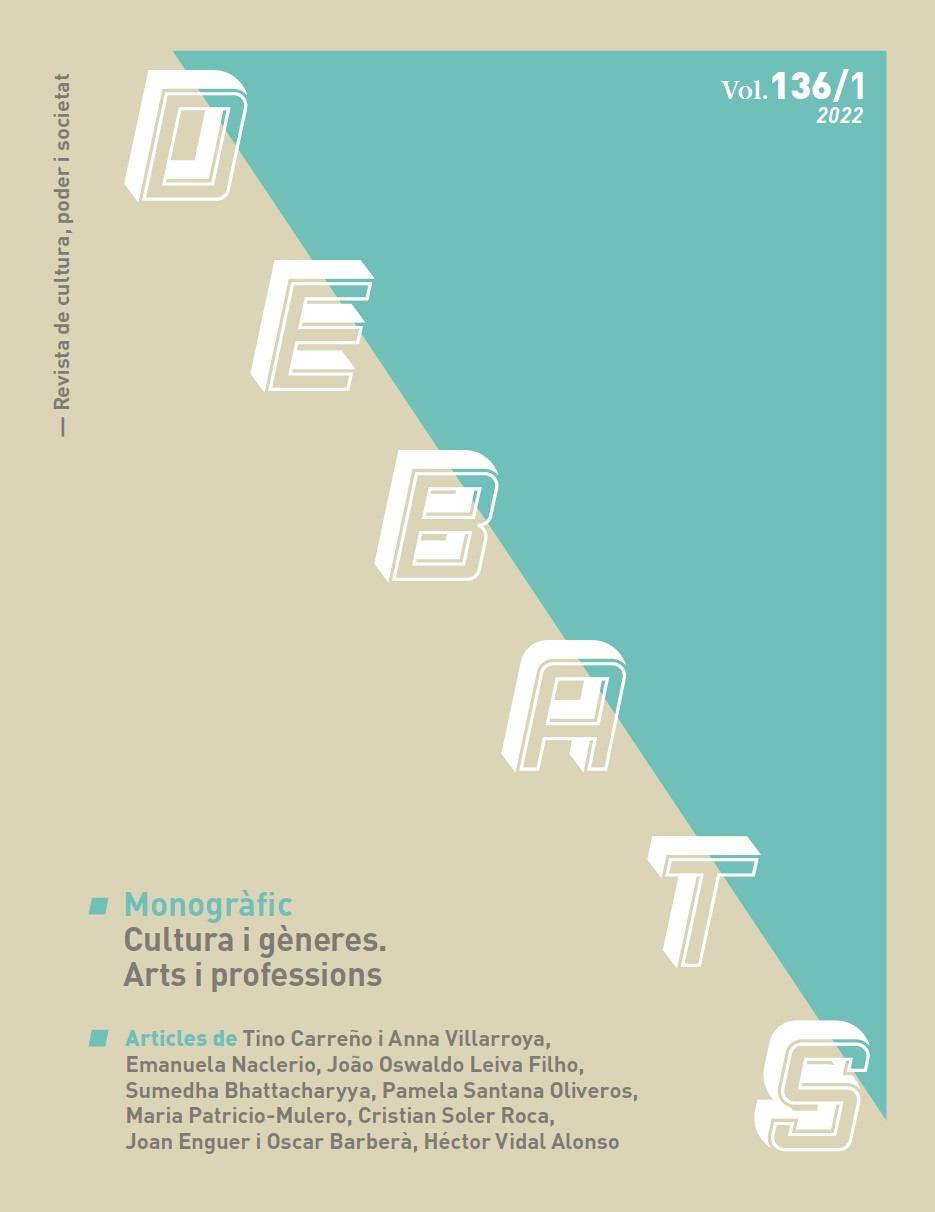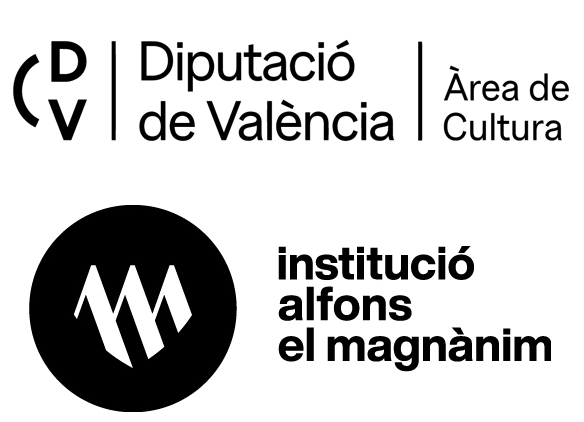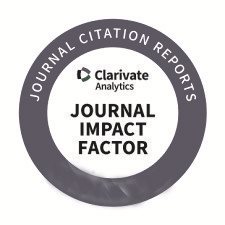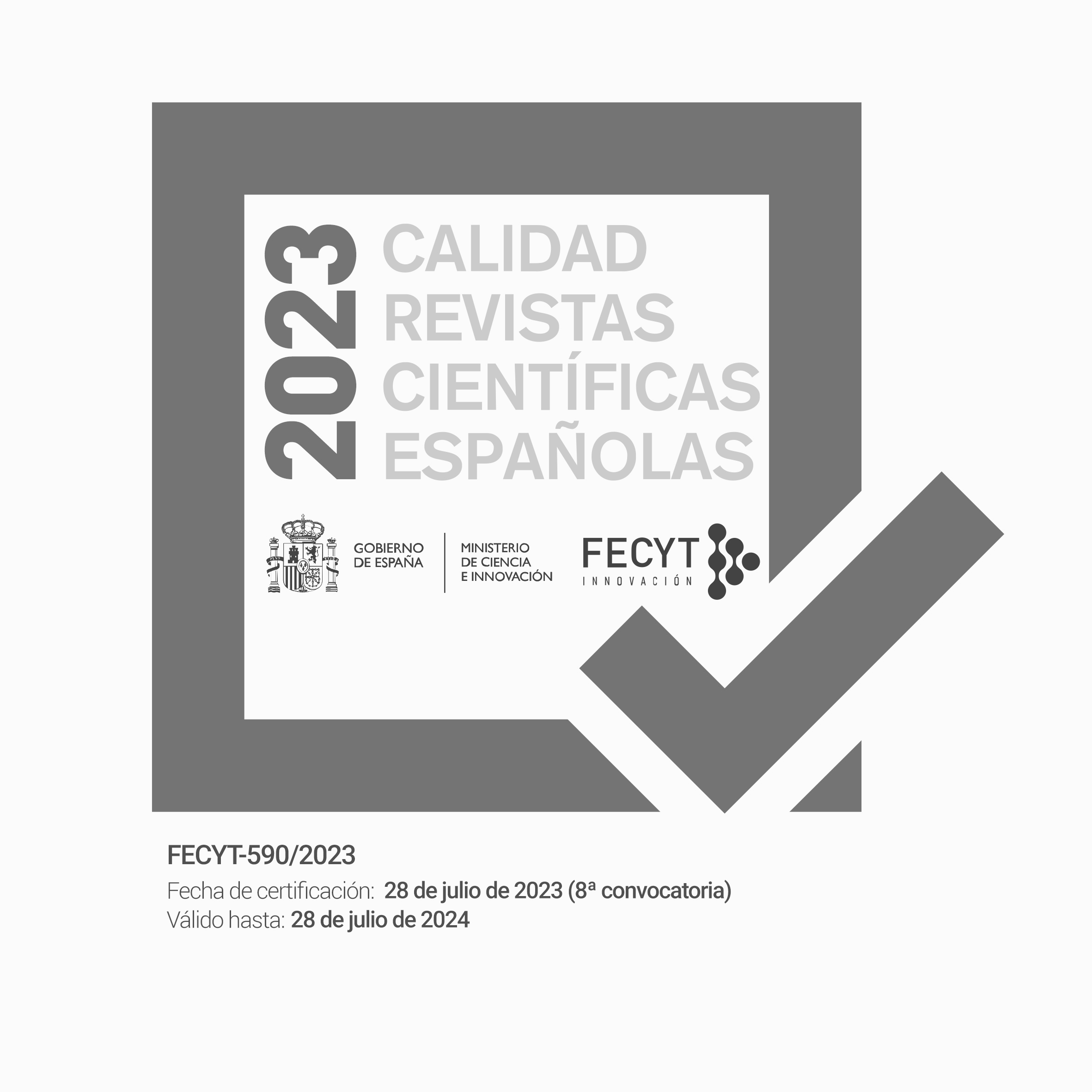Gender disparities in the performing arts labour market
DOI:
https://doi.org/10.28939/iam.debats-136-1.1Abstract
This article aims to analyse gender inequalities in the performing arts sector in Spain, and more specifically, the disparities evident in relation to remuneration. Based on a sample of 800 professionals, our results revealed that the employment situation in Spain is worse for women, who continued to be paid less than their male counterparts. This held true even when women performed the same duties, had a higher level of training, held the same positions, or had been working in the sector for the same number
of years as men. An understanding of these inequalities, and especially of their multidimensional character, could help both government agencies and private sector organisations to develop and implement measures that promote gender equality, which now forms the basis for cultural diversity in the performing arts.
Downloads
References
Banks, Mark. y Milestone, Katie (2011). “Individualization, Gender and Cultural Work. Gender”. Work and Organization, 18(1): 73–89. https://doi.org/10.1111/j.1468-0432.2010.00535.x
Becker, Gary (1983). “Inversión en capital humano e ingresos”. Toharia, L. (ed.). El mercado de trabajo: teoría y aplicaciones. Madrid: Alianza.
Benhamou, Françoise (1997). La economía de la cultura. Montevideo: Ediciones Trilce.
Cabañés, Francesc (dir) et al. (2011). Aproximación a la situación profesional de la gestión cultural en la Comunidad Valenciana. València: Unitat d’Economia de Cultura - Universitat de València.
Cabañés Martínez, Francesc (2017). “La profesión de gestor cultural Apuntes sobre la situación actual”. Culturas. Revista de Gestión Cultural, 4(1): 32-43.
Cabó, Anna y Sánchez, Joan Manuel (2017). Informe sobre la programació cultural 2016-2017 de l’Ajuntament de Barcelona des d’una perspectiva de gènere. Barcelona: Departament de Transversalitat de Gènere Gerència de Recursos de l’Ajuntament de Barcelona.
Carreño, Tino (2010). “Camins creuats. El perfil actual del gestor cultural a Catalunya”. Bonet, L. (Coord.), Perfil i reptes del gestor cultural. Barcelona: Gescènic.
Carreño, Tino y Villarroya, Anna (2020). L’ocupació cultural en l’àmbit públic. Perfil i condicions laborals dels professionals de la cultura als ajuntaments. Barcelona: CERC – Diputació de Barcelona.
Charhon, Pascale (2016). Of Boxes and Ceilings. Fresh Perspectives on Arts and Gender. Brussels: International Network for Contemporary Performing Arts, IETM
Conor, Bridget; Gill, Rosalind y Taylor, Stephanie (2015). “Gender and creative labour”. Sociological Review, 63(S1): 1-22. https://doi.org/10.1111/1467-954X.12237
Dean, Deborah (2008). Age, Gender and Performer Employment in Europe. Informe de investigación para el International Federation of Actors’ (FIA) project.
Dillman, Don. A.; Smyth, Jolene D. y Christian, Leah Melani (2014). Internet, mail, and mixed-mode surveys: the tailored design method. New Jersey: Wiley Publishing.
Eikhof, Doris Ruth y Warhurst, Chris (2013). “The promised land? Why social inequalities are systemic in the creative industries”. Employee Relations, 35(5): 495-508. https://doi.org/10.1108/ER-08-2012-0061
Eikhof, Doris Ruth; Newsinger, Jack; Luchinskaya, Daria y Aidley, Daniela (2019). “And … action? Gender, knowledge and inequalities in the UK screen industries”. Gender, Work and Organization, 26(6): 840–859. https://doi.org/10.1111/gwao.12318
European Institute for Gender Equality [EIGE] (2016) Gender in culture. Luxembourg: Publications Office of the European Union.
European Union (2019) Culture statistics. 2019 edition. Statistical books, Eurostat. Luxembourg: Publications Office of the European Union.
Fernández, Isabel (2016). Estudio de género en las programaciones de COFAE y en los equipos organizativos de las ferias. Madrid: COFAE.
Freestone, Elizabeth (2012). Women in theatre: how the ‘2:1 problem’ breaks down. Pentabus Theatre.
Fundación Aisge (2016). Situación sociolaboral del colectivo de artistes y bailarines en España. Madrid: Fundación AISGE.
Gouyon, Marie (2014). “Les femmes dans la création audiovisuelle et de spectacle vivant. Les auteurs de la SACD percevant des droits en 2011”, Culture Chiffres. Ministère de la Culture et de la Communication, Département des études, de la prospective et des statistiques, 4: 1-18.
Gouyon, Marie (2015). “Les non-salariés dans les activités culturelles”. En Omalek, L. y Rioux L. (Cord.) Emploi et revenues des indépendents, 59-73. Institut national de la statistique et des études économiques.
Guerra, Diana (2009). Evaluación del impacto de la formación en gestión cultural de la
Universidad de Barcelona. Barcelona: Universidad de Barcelona. Tesina sin publicar.
Hennekam, Sophie y Bennett, Dawn (2017). “Sexual Harassment in the Creative Industries: Tolerance, Culture and the Need for Change”. Gender, Work and Organization, 24(4): 418–434. https://doi.org/10.1111/gwao.12176
Hesmondhalgh, David y Baker, Sarah (2015). “Sex, gender and work segregation in the cultural industries”. Sociological Review, 63(S1): 23–36. https://doi.org/10.1111/1467-954X.12238
Joseph, Ammu. (2016) “Women as creators: gender equality”. En: Re/shaping cultural policies. A Decade Promoting the Diversity of Cultural Expressions for Development. Paris: UNESCO Publishing, 173-187.
Joseph, Ammu. (2018) “Gender equality: missing in action”. En: Re/shaping cultural policies. Advancing creativity for Development. París: UNESCO Publishing.
Kerbel, Lucy (2012). Swimming in the shallow end. Opportunities for girls in youth drama, focusing on the quantity and quality of roles available to them. A Tonic Theatre Research Project, en colaboración con Company of Angels, the National Youth Theatre of Great Britain y Zendeh.
Lena, Jennifer C. y Lindemann, Danielle J. (2014) “Who is an artist? New data for an old question”. Poetics, 43: 70-85. https://doi.org/10.1016/j.poetic.2014.01.001
Muro, Robert (Dir.) (2019) Informe sobre las artes escénicas en España, su financiación y situación laboral (2018). Madrid: Observatorio de la Academia, Academia de las Artes Escénicas de España.
Pastor Eixarch, Pilar (2015). Análisis de las diferencias de género en la Programación aragonesa del año 2014. Síntesis del informe. Madrid: Clásicas y Modernas, Asociación para la igualdad de género en la cultura.
Pujar, Sandrine (2016) Gender Inequalities in the cultural sector. Culture Action Europe.
Ramón-Borja Berenguer, Margarita y Pastor Eixarch, Pilar (2017). ¿Dónde están las mujeres?, Temporada 2015-16. Primera edición. Madrid: Clásicas y Modernas, Asociación para la igualdad de género en la cultura.
Steiner, Lasse y Schneider, Lucian (2013). “The happy artist: an empirical application of the work-preference model”. Journal of Cultural Economics, 37 (2): 225-246. https://doi.org/10.1007/s10824-012-9179-1
TBR (2008). Women in leadership in the creative and cultural sector. Cultural Leadership Programme.
Unesco (2019). Cultura y condiciones laborales de los artistas. Aplicar la Recomendación de 1980 relativa a la Condición del Artista. París: Organización de las Naciones Unidas para la Educación, la Ciencia y la Cultura.
Veiga Barrio, Isabel (2016). Informe de igualdad en las artes escénicas: análisis de la programación y equipos directivos del CDN. Temporada 2013-2014. Madrid: Clásicas y modernas - Asociación para la igualdad de género en la cultura.
Villarroya, Anna y Barrios, Maite (2019). Desigualtats de gènere en l’ocupació cultural a Catalunya. Informes CoNCA, IC17 (2019).
Villarroya, Anna (2017). “L’ocupació en el sector de la cultura des d’una perspectiva de gènere”. DeCultura, 50, nov. 2017, 1-59.
Wade Steketee, Martha y Binus, Judith (2015). Women Count: Women Hired Off-Broadway 2010-2015. New York: League of Professional Theatre Women.
Downloads
Published
How to Cite
Issue
Section
License
Without prejudice to the provisions of article 52 of Spanish Law 22/1987 of November 11 on Intellectual Property, BOE (official state bulletin) of November 17, 1987, and pursuant to said legislation, the author(s) surrender(s) free of charge its rights of edition, publication, distribution and sale of the article, for its publication in Debats. Journal on Culture, Power and Society.
Debats. Journal on Culture, Power and Society is published under the Creative Commons license system in accordance with the «Recognition - Non-Commercial (by-nc) modality: The generation of derivative works is permitted provided that commercial use is not made. Nor can the original work be used for commercial purposes».
Thus, when the author submits his/her contribution, he/she explicitly accepts this assignment of publishing and publishing rights. Authors also authorize Debats. Journal on Culture, Power and Society to include their work in an issue of the journal to be distributed and sold.











